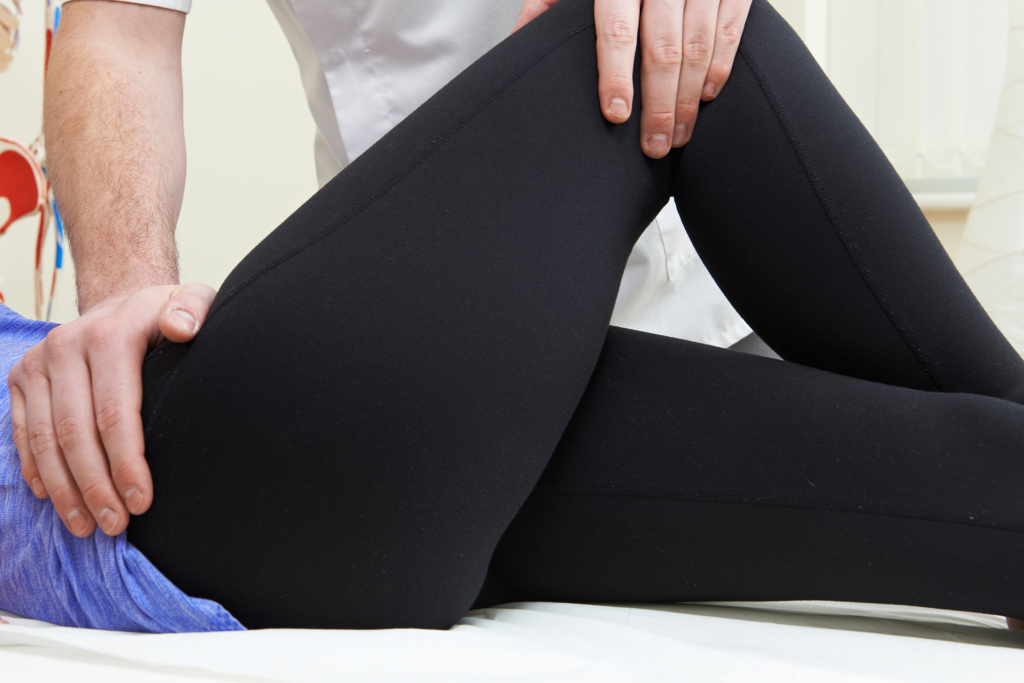
Pelvic venous congestion, or pelvic congestion syndrome, is a condition that causes chronic pelvic pain due to enlarged veins in the lower abdomen. Veins, the blood vessels that carry deoxygenated blood back to the heart, have valves intended to prevent blood from flowing backward. When those valves are damaged or don’t function well, blood builds up in the affected area, causing the veins to enlarge and change shape. Most people are familiar with varicose veins, which is what this phenomenon is called when it occurs in the legs and feet. Pelvic venous congestion is, in essence, varicose veins in your abdomen.
Chronic pelvic congestion syndrome causes pain that can be quite intense lasting 6 months or longer. It is not connected to the menstrual cycle, and it can be difficult to diagnose, as there are many possible causes for pelvic pain that must be ruled out to reach an accurate diagnosis. If you’ve suffered from chronic pelvic pain without an obvious cause for some time, it may be due to pelvic venous congestion.
Pelvic venous congestion primarily affects women between the ages of 25 and 40. It’s estimated to affect at least one in three women at some point in their lifetime. Pelvic venous congestion is often experienced for the first time during or following pregnancy, and it is more common among women who have given birth multiple times. Other risk factors for developing pelvic congestion syndrome include:
The pain from pelvic venous congestion can last for months and is usually felt only on one side (often the left). It can be serious enough to affect your day-to-day activities. Pelvic venous congestion is characterized by:
Pain from pelvic venous congestion may also be exacerbated by walking or changing position.
While enlarged veins are the cause of pelvic congestion syndrome, it is possible for women to have enlarged veins without pain. However, it is thought that estrogen, which causes dilation of the veins, plays a significant role in the development of symptoms. Symptoms tend to diminish as women approach menopause and their estrogen levels naturally decrease. However, if you are in pain, you should not wait to seek treatment.
If you’re experiencing severe, ongoing pelvic pain, your doctor will consider your health history and run tests to check for several potential causes before pelvic congestion syndrome can be confirmed. These can include urine tests, to rule out bladder problems, and blood tests, to eliminate pregnancy, infections, anemia, and other factors as the cause of your pain. X-rays, pelvic ultrasounds, CT scans, and MRIs are the best way to detect pelvic venous congestion.
Treatment of pelvic congestion syndrome can range from medication to alleviate symptoms up to surgery to remove damaged veins, ovaries, or the uterus. Your doctor may suggest starting with gonadotropin hormone drugs, which block ovarian function and may relieve pain, or progestin hormone drugs to see if they are sufficient to eliminate your symptoms. If those don’t produce significant relief, pelvic venous embolization is a minimally invasive alternative to treat problematic veins.
In this outpatient procedure, an interventional radiologist threads a catheter through a minor incision to the site of the affected veins. Each problem vein is embolized with vascular plugs or coils, which block blood flow to the varicose vein and redirects it to healthy veins, relieving pressure and pain. Patients can return to work the day after the procedure and are able to resume full activity within a week.
At the Vein & Fibroid Treatment Center, board-certified interventional radiologist Dr. Saleh has been successfully treating painful venous conditions, including pelvic congestion syndrome, for over a decade. If you’re suffering from chronic pelvic pain from enlarged veins, help is possible. We can evaluate your case and determine if you are a good candidate for pelvic venous embolization. To learn more about our minimally invasive treatments or to schedule an examination, contact the Vein & Fibroid Treatment Center here.